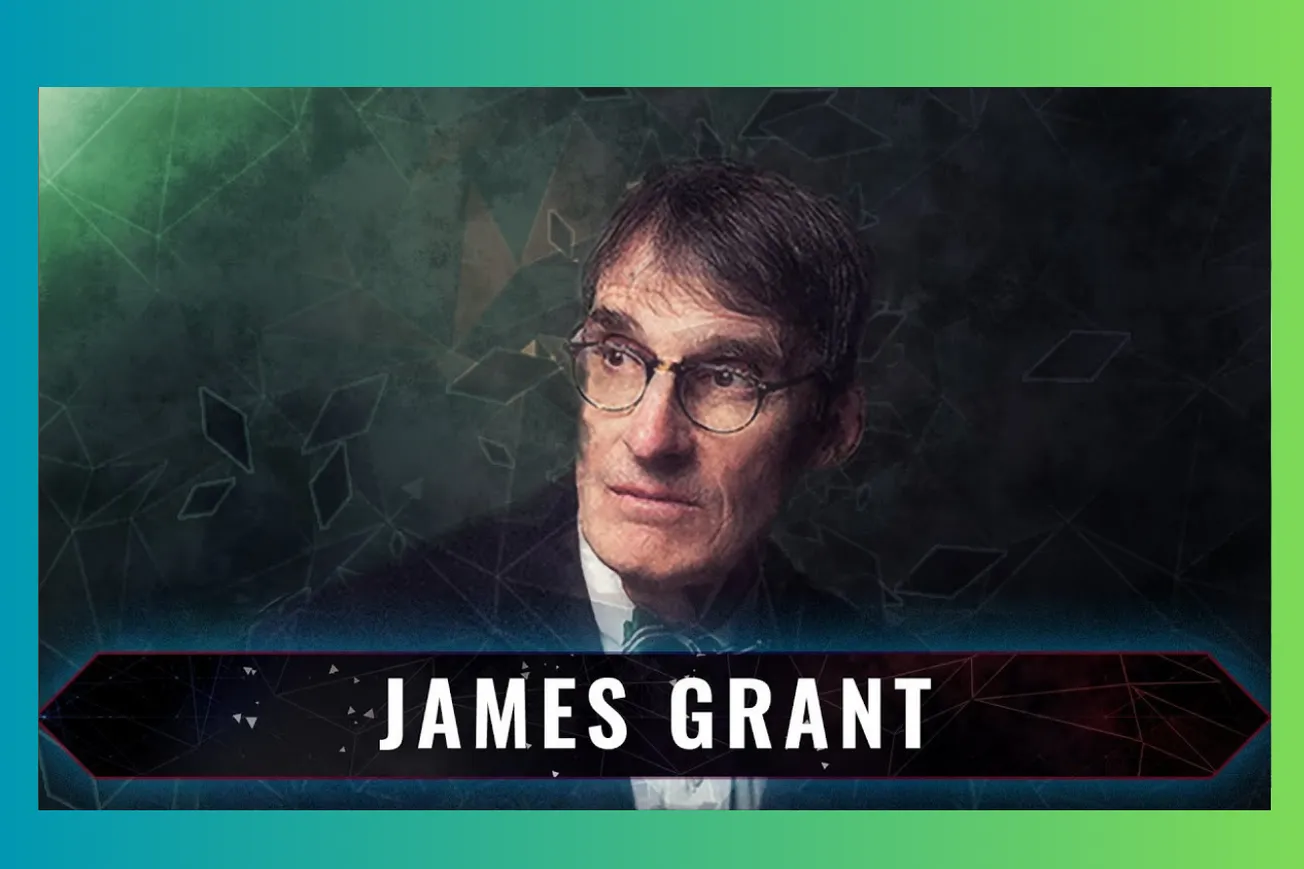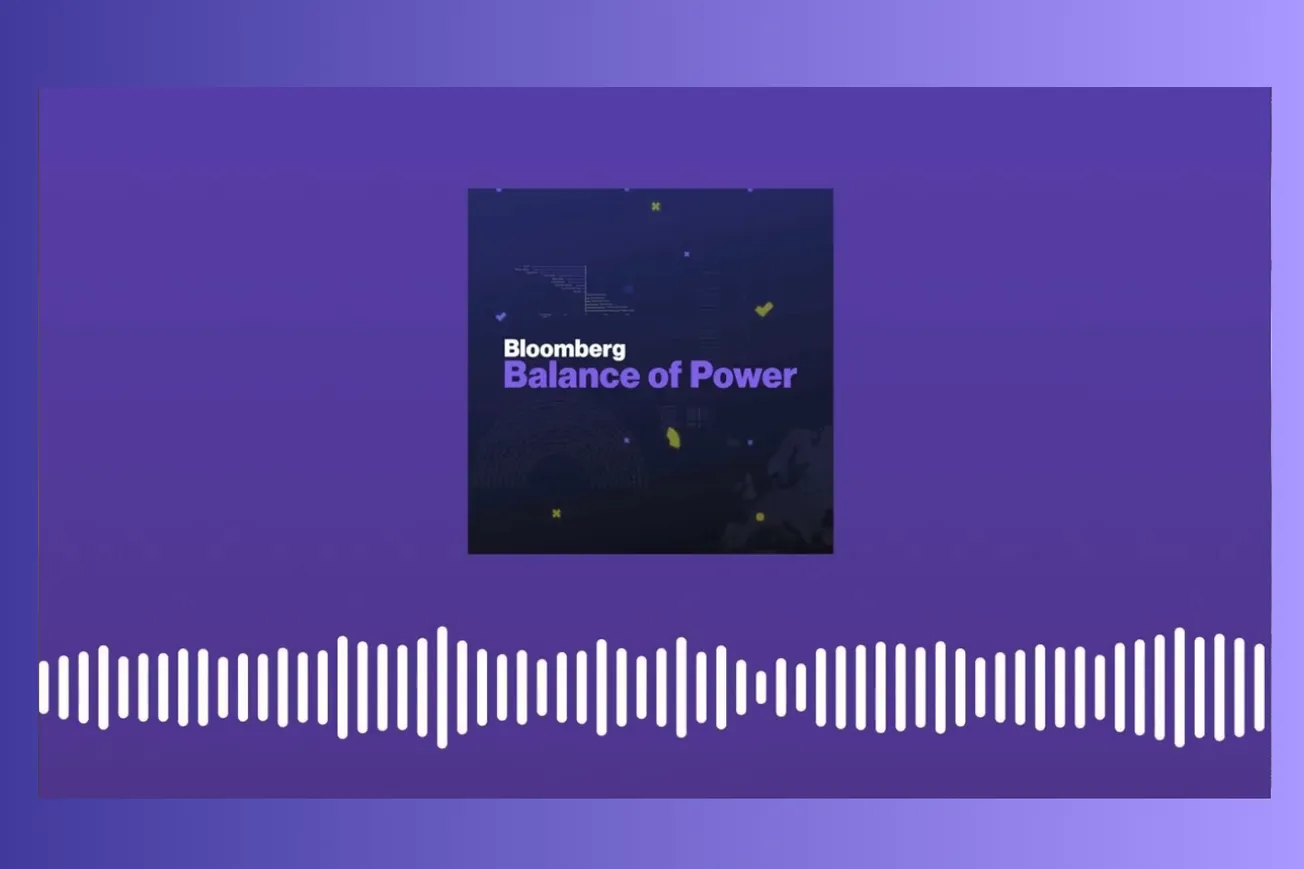Table of Contents
Legendary financial observer James Grant explains how today's negative interest rates represent an unprecedented 5,000-year first in human history and what it means for investors and savers.
Key Takeaways
- We are living through a 5,000-year first in the recorded history of interest rates, with negative long-term rates never before seen in human civilization.
- Interest rates are prices that serve crucial functions: defining risk, setting investment hurdle rates, determining present value of future money, and rewarding thrift and patience.
- The Federal Reserve's balance sheet expansion from $800 billion to over $4 trillion represents an unprecedented monetary experiment with unknown consequences for unwinding.
- Traditional economic theory suggested interest rates reflected the profitability of enterprise independent of central bank manipulation, but this relationship has been severed.
- China's debt-to-GDP ratio has doubled while growing twice as fast as output, creating what Grant calls "the greatest derangement of debt ever" within any nation's borders.
- Gold serves as the reciprocal of faith in central banking, competing against government-issued paper currencies and newer cryptocurrencies like Bitcoin.
- Very low interest rates paradoxically may depress rather than stimulate economic activity by postponing business failures and encouraging over-borrowing.
- The Federal Reserve operates as an undercapitalized bank that would be shut down if it were a private institution competing in the marketplace.
- Historical interest rate trends span generations (35-year cycles), suggesting current ultra-low rates may persist longer than most expect before reversing.
Timeline Overview
- 00:00–12:45 — Introduction and Historical Context: James Grant's background founding Grant's Interest Rate Observer in 1983 when Treasury bonds yielded nearly 14%, contrast with today's negative rates representing 5,000-year historical first
- 12:46–25:30 — Defining Interest Rates: What interest rates are as prices of money, their functions in defining risk and investment hurdle rates, determining present value, and serving as rewards for thrift and patience
- 25:31–38:15 — Pre-Federal Reserve Rate Setting: How interest rates existed independently before central banks, David Ricardo's theory that rates reflected enterprise profitability, evolution of Federal Reserve's role since 1913
- 38:16–51:42 — Federal Reserve Balance Sheet Mechanics: How quantitative easing works through money creation, expansion from $800 billion to $4+ trillion, Fed's undercapitalized structure compared to private banks
- 51:43–64:28 — Balance Sheet Unwinding Challenges: Ben Bernanke's promise to reverse QE "in 15 minutes" versus reality of 10-year duration, mechanics of selling bonds back to market, treasury financing implications
- 64:29–77:55 — Paradox of Low Rates: How ultra-low rates may depress rather than stimulate by postponing business failures, bringing consumption forward but borrowing from future, Radio Shack example of zombie companies
- 77:56–90:20 — China's Debt Crisis: Debt twice GDP growing twice as fast as output, real estate as preferred banking collateral violating ancient banking principles, combination of regulated capitalism and communist micromanagement
- 90:21–102:47 — Gold as Monetary Alternative: Gold as reciprocal of faith in central banking, competition with paper currencies and Bitcoin, Grant's strategy of investing in "inevitable historical outcome" of paper money failure
- 102:48–115:10 — Currency Crisis Prerequisites: Need for demonstrated failure of central bank asset price manipulation, wealth effect policies, potential for unscripted inflation driving rates higher despite government debt service implications
- 115:11–126:35 — Investment Philosophy and Opportunities: Running toward fires rather than following crowds, examples from Turkey and Russia investments, importance of being right later rather than immediately
The 5,000-Year Financial Experiment We're Living Through
Humanity has never experienced anything like today's interest rate environment. According to financial historian James Grant, we are witnessing a 5,000-year first: negative long-term interest rates. This unprecedented situation means some investors are literally paying governments for the privilege of lending them money for multiple years.
Grant consulted Dick Sylla, co-author of the definitive "History of Interest Rates," to confirm this extraordinary claim. Throughout recorded financial history, spanning millennia of human civilization, negative substantial long-term interest rates have never existed. This puts our current monetary experiment in stark historical perspective.
- In 1984, just one year after Grant founded his newsletter, investors could lock in nearly 14% returns on 30-year Treasury securities, guaranteed for 25 of those 30 years
- Today's children have never seen meaningful interest rates, growing up in an environment where the fundamental reward for saving and waiting has been eliminated
- European and Japanese investors routinely accept negative yields on government bonds, paying for the privilege of lending rather than receiving compensation
- The historical rarity of this situation suggests we are conducting an unprecedented experiment with unknown consequences for human economic behavior
The elimination of interest rates removes crucial market signals that have guided human economic activity for thousands of years. Without these price signals, determining risk, setting investment hurdles, and calculating present values becomes increasingly difficult.
This represents more than just a policy choice—it constitutes a fundamental departure from how human societies have organized economic activity throughout recorded history. The long-term consequences remain unknown because humanity has no historical precedent to guide expectations.
What Interest Rates Really Are and Why They Matter
Interest rates function as much more than simple borrowing costs—they serve as the most important prices in capitalism, providing essential information that guides economic decision-making across all sectors of society. Understanding their multiple functions reveals why their elimination creates such profound distortions.
As the price of money, interest rates help define risk by indicating how much borrowers must pay for access to capital. Higher rates signal greater perceived risk, while lower rates suggest safer borrowers. This risk-pricing function allows markets to allocate capital efficiently to its most productive uses.
- Interest rates establish investment hurdle rates, helping businesses determine minimum returns needed to justify new projects and capital expenditures
- They serve as discount rates for calculating present value of future cash flows, essential for all long-term financial planning and investment analysis
- Rates reward thrift and patience, encouraging people to defer immediate consumption in favor of future benefits
- They create what Grant calls a "shot clock" for business, forcing companies to generate returns above the cost of capital or face elimination
The moral dimension of interest rates reflects their role as rewards for human virtues like patience and delayed gratification. In an era of instant delivery and immediate satisfaction, historically low rates paradoxically coincide with society's increasing impatience.
Grant emphasizes that substantial interest rates impose real costs on borrowing, thereby forcing economic action and preventing inefficient enterprises from prolonging their existence indefinitely. This "creative destruction" function ensures capital flows to more productive uses over time.
How Interest Rates Worked Before Central Bank Control
David Ricardo's early 19th-century economic theory provides crucial insight into how interest rates functioned before central bank manipulation became dominant. Ricardo argued that interest rates reflected the profitability of enterprise itself, independent of monetary authority actions.
Under Ricardo's framework, the rate of interest established in markets reflected economic reality—the actual returns available from productive business activity. The more profitable businesses became, the higher rates willing borrowers would pay, because borrowing remained worthwhile at elevated costs.
- Market-determined rates had no connection to central bank overnight lending rates, representing genuine economic signals rather than policy tools
- Banks extended credit through processes that helped determine interest rates organically, without artificial intervention
- Before 1913, the United States operated without a central bank for over a century, with rates determined through market mechanisms similar to other commodity prices
- The Federal Reserve initially used open market operations to generate revenue for its own operations rather than to manipulate broader economic conditions
This historical perspective reveals how dramatically our current system departs from market-based interest rate determination. The transformation from Ricardo's market-driven model to today's centrally-planned rates represents a fundamental shift in how human societies organize economic activity.
The pre-Federal Reserve system allowed genuine price discovery for the cost of capital, enabling markets to allocate resources based on actual supply and demand for funds rather than policy objectives determined by monetary authorities.
Understanding this historical baseline helps illuminate how today's ultra-low rates represent not just unusual policy but a complete abandonment of market-based capital allocation that guided human economic development for centuries.
The Federal Reserve's Balance Sheet: A Pictorial History of Crisis
The Federal Reserve's balance sheet expansion from approximately $800 billion before 2008 to over $4 trillion represents more than monetary policy—it provides a visual record of financial system failure and the unprecedented measures taken to address it. This expansion occurred through quantitative easing, a euphemistic term for creating money from nothing.
When the Fed purchases bonds, it doesn't need to secure funding like private investors. Instead, it creates payment by crediting the seller's account through computer keystrokes. This digital money creation allows unlimited bond purchases without the constraints that limit other market participants.
- The Fed operates with minimal capital compared to private banks, which must maintain 10-15% capital ratios for safety
- Private banks would be shut down for operating with the Fed's capital structure, making it what Grant calls "the ultimate zombie bank"
- Excess reserves held by banks increased from roughly $1 billion to $2.2 trillion, fundamentally altering money market operations
- The traditional fed funds market essentially disappeared as massive excess reserves eliminated banks' need to borrow from each other overnight
Grant notes that the Fed's balance sheet resembles "the ugliest thing in finance since Medusa"—a bank so undercapitalized that it would be immediately closed if it operated under normal banking regulations. Yet this institution holds over $4 trillion in assets with virtually no capital cushion.
The question of unwinding this unprecedented expansion reveals the experimental nature of quantitative easing. Ben Bernanke promised on 60 Minutes that the Fed could reverse these policies "in 15 minutes," yet nearly a decade later, the balance sheet remains at crisis levels.
The Unwinding Problem: From 15 Minutes to 10 Years
Ben Bernanke's confident 2009 assertion that quantitative easing could be reversed "in 15 minutes" exemplifies the hubris underlying modern monetary policy. Nearly a decade later, what was supposed to be temporary emergency stimulus has become a permanent feature of the financial landscape.
The mechanics of unwinding present daunting challenges. The Fed can either sell bonds back to the market or allow them to mature without replacement. Both approaches require finding new buyers for massive quantities of government debt that the Fed previously absorbed.
- Selling bonds back to markets would flood them with supply, potentially driving prices down and yields up significantly
- Allowing bonds to mature requires the Treasury to find replacement buyers for hundreds of billions in maturing debt annually
- Either approach risks disrupting markets that have grown accustomed to Fed support and artificially low yields
- The "temporary" nature of these policies has stretched from emergency measures to decade-long permanent interventions
Grant's dress business analogy illustrates the fundamental problem: when a major buyer exits any market, prices must adjust to clear excess supply. The Fed's exit would force bond prices lower and yields higher to attract new buyers.
This unwinding challenge reveals the experimental nature of quantitative easing. Despite confident assertions about reversibility, policymakers are discovering that engineering financial markets is easier than unengineering them.
The Fed's reluctance to begin serious unwinding after nearly a decade suggests growing recognition that these policies may be irreversible without causing the very disruptions they were designed to prevent.
The Paradox: Why Low Rates May Depress Rather Than Stimulate
Conventional wisdom assumes ultra-low interest rates stimulate economic activity, but Grant argues they may actually depress growth through several counterintuitive mechanisms. This paradox challenges the fundamental assumptions underlying modern monetary policy.
Low rates keep inefficient businesses alive that would otherwise fail, preventing capital reallocation to more productive uses. Radio Shack serves as Grant's example—a company that survived years longer than economic logic suggested because cheap credit allowed continued operations despite obvious business model obsolescence.
- Zombie companies crowd out efficient competitors by remaining in markets where they no longer belong
- Low rates bring consumption forward in time but create this demand by borrowing from future consumption rather than generating new wealth
- Heavily indebted consumers may respond to low rates by saving more rather than spending more, recognizing their precarious financial positions
- The absence of meaningful returns on savings forces risk-averse investors to seek yield in inappropriate investments
Grant compares substantial interest rates to basketball's shot clock—they force action by imposing real costs on capital. Without this forcing mechanism, economic participants can delay difficult decisions indefinitely, reducing overall economic dynamism.
The elimination of interest rates as market signals creates widespread distortions in investment allocation, business planning, and consumer behavior. Markets lose their primary mechanism for distinguishing between viable and unviable enterprises.
This analysis suggests that ultra-low rates may be self-defeating, creating the very economic stagnation they were designed to cure through their interference with natural market selection processes.
China: The Greatest Derangement of Debt Ever
China's debt situation represents what Grant characterizes as "the greatest derangement of debt ever" seen within any nation's borders, incorporating and exceeding the financial excesses of Japan in the 1980s and America's own credit bubbles. The scale and recklessness of Chinese lending practices have no historical precedent.
China's debt-to-GDP ratio stands at twice the level of economic output while growing at twice the rate of GDP growth—a mathematically unsustainable trajectory that violates every principle of prudent lending. The speculation, deception, and lack of transparency surrounding these debts creates unprecedented systemic risk.
- Real estate serves as the preferred collateral for Chinese bank lending, violating ancient banking principles that considered real estate too illiquid for safe banking
- American banking regulations prohibited real estate collateral starting in the 1860s, wisdom that China has completely abandoned
- Empty apartment blocks rise into the air with real estate accepted as fail-proof wealth storage regardless of yield or pricing fundamentals
- The Chinese banking system combines the worst aspects of regulated capitalism with communist micromanagement, creating unique systemic vulnerabilities
Unlike other major economies that experienced credit contractions after 2008, China responded by accelerating credit creation in parabolic fashion. This response multiplied rather than resolved underlying imbalances, creating larger bubbles than previously existed.
Grant expects "a very noisy and scary and costly denouement" in China, though timing remains uncertain. The combination of unprecedented debt levels with untested financial structures suggests the eventual crisis will exceed previous emerging market collapses in scale and global impact.
The Chinese example demonstrates how departing from time-tested banking principles creates systemic risks that threaten not just domestic stability but global financial system integrity.
Gold: The Reciprocal of Faith in Central Banking
Gold functions as more than just an investment—it represents the reciprocal of the world's faith in central banking and government-issued currencies. As confidence in monetary authorities declines, gold's appeal as an alternative store of value increases correspondingly.
Grant describes gold as "sterile" and "a very poor investment" in traditional terms because it yields nothing and simply "looks good." However, gold competes in the marketplace of monetary ideas against government-issued paper currencies and newer cryptocurrencies like Bitcoin.
- Since the Federal Reserve's founding in 1913-1914, the dollar has lost approximately 99.99% of its value against gold
- Gold has demonstrated an ability over millennia to maintain purchasing power across different monetary regimes and political systems
- Grant's gold strategy involves "investing in the disappointment attending every single experiment in paper money down through the ages"
- He anticipates "the failure of the most radical experiment in paper money ever seen" currently underway globally
Gold peaked near $2,000 per ounce in 2011 before declining to around $1,260, providing mixed performance for recent investors. However, Grant emphasizes his long-term perspective, viewing gold ownership as preparation for an "almost inevitable historical outcome" based on paper money's historical track record.
Grant's gold thesis requires both a currency crisis and demonstrated failure of central bank attempts to manipulate asset markets. He anticipates that people unfamiliar with gold as money—including millennials who have never experienced currency instability—will eventually discover precious metals as stores of value.
This view positions gold not as a speculation but as insurance against the failure of unprecedented monetary experiments currently underway across developed economies.
Investment Philosophy: Running Toward Fires
Grant's investment approach involves "running toward fires" rather than following crowds—seeking opportunities where others see primarily risk while identifying risks where others see sure things. This contrarian methodology requires patience and willingness to be early rather than popular.
The newsletter's strategy focuses on finding assets trading below intrinsic value due to temporary market dislocations, political uncertainties, or unfashionable investment themes. Recent examples include Turkey during political turmoil and Russian banks during oil price declines and geopolitical tensions.
- Grant's team identified value in Turkish securities when problems were "well ventilated" and risks evident, creating compelling risk-adjusted opportunities
- They recommended Sberbank, a well-managed Russian institution, when oil price declines made the entire country appear to be "going out of business"
- The approach requires fundamental analysis to distinguish between temporary dislocations and permanent impairments
- Success comes from "everyone agreeing with you later" rather than immediate market validation
This methodology explicitly rejects momentum investing and asset bubbles, instead seeking situations where pessimism has created prices below reasonable estimates of intrinsic value. The approach requires emotional discipline to buy when others are selling and patience to wait for markets to recognize underlying value.
Grant emphasizes avoiding situations where he might eventually say "I used to be rich"—a reference to the saddest words in investment management. This requires selling appreciated assets before they become overvalued rather than riding trends to their conclusions.
The philosophy recognizes that standing in lines to buy popular assets almost guarantees poor timing and disappointing returns, making contrarian positioning essential for long-term investment success.
Conclusion and Practical Implications
James Grant's perspective reveals we are living through an unprecedented monetary experiment with no historical precedent to guide expectations. His analysis of 5,000-year interest rate history, combined with observations about debt accumulation and central bank balance sheet expansion, suggests current policies are unsustainable despite their apparent permanence. Grant's emphasis on organic, market-determined interest rates and sound money principles offers a framework for understanding both current distortions and potential future corrections.
Practical Implications
- Recognize Historical Uniqueness: Understand that current negative interest rates represent a 5,000-year first with no historical guidance for outcomes
- Question Low-Rate Assumptions: Challenge conventional wisdom that ultra-low rates necessarily stimulate economic growth given their potential depressive effects
- Prepare for Rate Normalization: Consider how businesses, investments, and personal finances would fare if interest rates returned to historical averages around 6%
- Diversify Beyond Paper Assets: Include real assets like gold as insurance against currency devaluation and monetary system failures
- Avoid Crowded Trades: Never stand in lines to buy popular assets; seek opportunities where pessimism has created value
- Study Balance Sheet Quality: Analyze debt levels and capital adequacy, avoiding overleveraged entities that depend on cheap credit for survival
- Monitor Chinese Debt Crisis: Watch for contagion effects from what Grant calls "the greatest derangement of debt ever" within China's borders
- Embrace Contrarian Timing: Be willing to be early rather than popular, running toward fires when others see only risks
- Preserve Purchasing Power: Focus on real returns after inflation rather than nominal yields in an era of financial repression
Predictions About the World to Come
- Interest Rates Will Eventually Normalize: Historical 35-year cycles suggest current ultra-low rates will eventually reverse, potentially causing massive disruption to debt-dependent governments and businesses
- Central Bank Credibility Will Erode: Failed promises about policy reversibility and growing recognition of permanent intervention will undermine faith in monetary authorities
- Gold Will Regain Monetary Status: Currency crises and central bank failures will drive new generations to rediscover precious metals as stores of value independent of government promises
- Chinese Debt Crisis Will Trigger Global Contagion: The unprecedented scale of Chinese lending excesses will eventually produce a "noisy and scary" collapse affecting global markets
- Zombie Companies Will Face Mass Extinction: Rising rates or economic downturns will eliminate businesses kept alive artificially by ultra-cheap credit
- Dollar Hegemony Will Face Serious Challenges: Competing cryptocurrencies and loss of faith in paper money will threaten the dollar's reserve currency status
- Real Assets Will Outperform Financial Assets: Physical goods and commodities will protect wealth better than government bonds and paper claims during monetary system transitions
- Generational Wealth Transfer Will Favor Hard Assets: Millennials and subsequent generations will discover precious metals and real assets as their paper currency inheritance proves worthless
- Regional Currency Blocs Will Replace Dollar System: Multipolar monetary arrangements will emerge as alternatives to current dollar-dominated international finance
- Interest Rate Cycles Will Resume: After potentially decades of suppression, natural interest rate cycles will reassert themselves with potentially violent corrections





